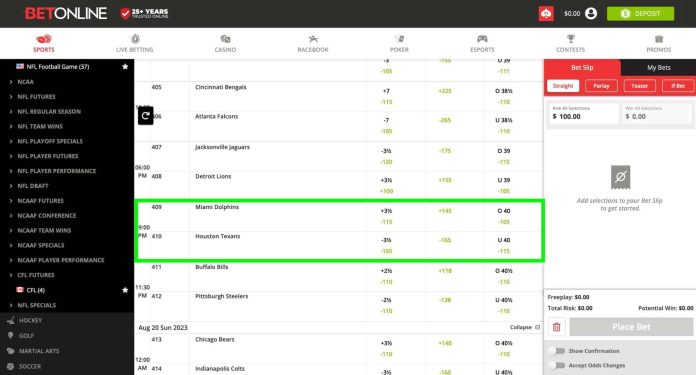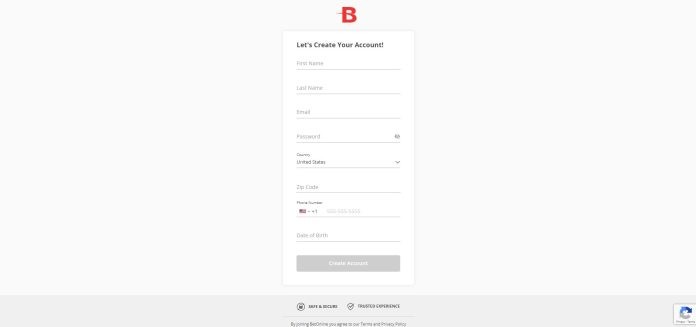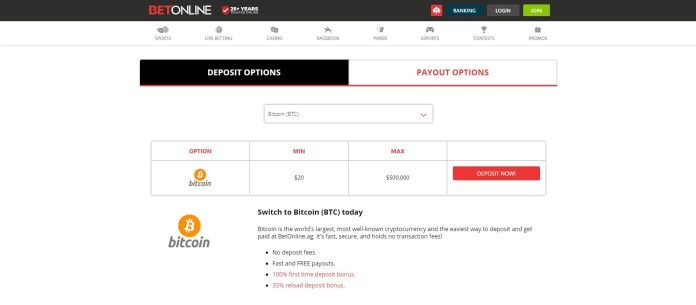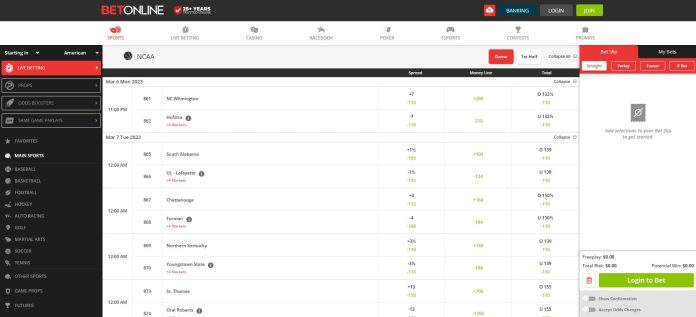A popular bet type in football and basketball, point spread betting involves wagering on the margin of victory between two competing sides, where one is a favorite and the other is the underdog. It aims to level the playing field, creating better odds and adding more excitement to sports betting.
Want to learn more about betting the point spread and how it works in the NBA, NFL, NHL, MLB, soccer, etc? We’ll inform you with all the essential details about this bet type – how to bet against the spread, the pros and cons of the wager, how to read odds, plus much more.
What is Point Spread Betting?
What is point spread in betting? It refers to the point, run, or goal margin a team must win or lose by for a bet to be successful. Although more commonly used in football and basketball, point spread bet is becoming increasingly popular across other sports in the United States. Known as handicap betting in soccer, point spread is also called the run line in baseball, and the puck line in hockey’s NHL.
In every sporting event, the competing sides cannot have the same level of skill or ability, as there’s always the favorite team or athlete expected to win comfortably and the underdog, who is more likely to lose. In a bid to level the playing field, sportsbooks make a point spread that creates a form of handicap between the opponents. This is a great way to spice up sports wagering and increase bettors’ chances of winning. Now, we have point spread betting explained.
Betting on the point spread is exciting because it makes wagering on the underdogs seem more attractive, compelling bettors to stake on that team or player. This bet type differs from a moneyline wager or over/under betting, as it requires a deeper knowledge of the sport and competing sides to “beat the spread” and land a win.
How to Read and Understand Point Spreads
Understanding how to read a point spread is essential for anyone looking to answer the question – ‘how does point spread betting work?’ The point spread, often represented as a positive (+) or negative (-) number, provides crucial information about the predicted margin of victory or defeat between two teams.
Typically, point spread odds are displayed in a half-point format (+.5 or -.5) on the best spread betting sites in the US, ensuring no tie in any bet, as a winner and loser must emerge.
Now, we’ll explain what these plus and minus signs signify and illustrate their meaning with relevant examples.
Positive (+) Point Spread
When you encounter a positive point spread, such as +6.5 or +3, it indicates how many points the underdog team receives. In this scenario, the sportsbook predicts that the underdog will win the game outright or lose by fewer points than the specified spread. Let’s illustrate this with an example:
In the above NFL matchup between the Miami Dolphins and Houston Texans, the actual point spread is set at +3.5 for the former and -3.5 for the latter.
If you decide to bet on the Miami Dolphins with a +3.5-point spread, they must lose the game by three points or fewer or win outright for your bet to be successful. If the final score is Miami Dolphins 20 – 22 Houston Texans, the Dolphins still cover the spread because they lost by only two points (24 – 22 = 2), which is less than three points.
Negative (-) Point Spread
On the other hand, a negative point spread, like -4 or -7.5, indicates the number of points the favored team is required to win for a bet on them to be successful. The sportsbook predicts that the favored team will win by at least the specified spread. Let’s continue with our previous example to demonstrate a negative point spread.
If you decide to bet on the Texans with a -3.5-point spread, they must win the game by four points or more for your bet to win. If the final score is Miami Dolphins 28 – 17 Houston Texas, the Texans cover the spread because they won by 11 points (28-17 = 11), which is more than four points.
Now that we’ve provided an answer to the question – ‘What is a point spread in sports betting?’ and have point spread betting explained, let’s look at some concepts commonly associated with this type of wager.
What is Betting Against the Point Spread?
Betting against the point spread, also known as ATS betting, is a popular strategy that allows sports bettors to back a team perceived as less likely to win the game outright. In point spread betting, the sportsbook assigns a positive point spread to the underdog, indicating the number of points they are expected to lose.
Therefore, betting against the spread on the best offshore sportsbooks means you are wagering on the underdog to either win the game or lose by fewer points than the specified spread.
What Does it Mean to Cover the Spread?
In point spread betting, “covering the spread” refers to a scenario where the favorite team wins the game outright by a margin more significant than the specified point spread. When a team covers the spread, they have outperformed the sportsbook’s expectations, and the bet placed on them becomes a winning bet.
For example, if a sportsbook sets a point spread of -4.5 for Team A and +4.5 for Team B in a basketball game, and you bet on Team A, they must win by at least five points to cover the spread. If the final score is Team A 102, Team B 97, Team A covers the spread because they won by more than no less than 5 points (102-97 = 5).
What Does Beating the Spread Mean?
In contrast to covering the spread, “beating the spread” specifically focuses on the performance of the underdog team exceeding the sportsbook’s expectations regarding the point spread outcome. When the underdog beats the spread, they have performed better than anticipated, either by winning the game outright or by losing by a smaller margin than the specified spread.
From our previous example, if you engage in underdog betting by putting money on the weaker Team B with a +4.5 point spread, they will beat the spread if they either win the game outright or lose by fewer than 5 points.
If the final score is Team A 24 — Team B 20, Team B beats the spread because they lost the game by 4 points (24-20 = 4), which is fewer than 5.
Understanding the Closing Line Value in Spread Betting
The Closing Line Value (CLV) is a crucial concept in betting on the point spread that measures a bettor’s ability to accurately predict the final point spread. CLV refers to the difference between the point spread at the time a bet is placed and the point spread at the closing of the betting market, just before the game begins. It serves as an essential performance metric for bettors, indicating whether they could secure a more favorable point spread than what was available later or if they missed out on a potentially better opportunity.
For example, if a bettor places a wager on Team X with a +5.5 point spread, but by the time the game starts, the point spread has shifted to +3.5, the bettor would have gained a positive CLV of +2. In this scenario, the bettor secured a better point spread than what was available later, giving them an advantage over others who placed their bets closer to the game time. On the other hand, if the point spread moved to +7.5 by game time, the bettor would have experienced a negative CLV of -2, indicating that they missed out on a more favorable point spread – remember, you can access the latest NFL picks and NBA picks before making any final point spread bet decision.
How Can I Bet on a Point Spread?
If you want to add excitement and strategy to your sports betting experience, spread betting is an excellent choice. Fortunately, online sportsbooks provide a convenient platform to engage in this form of wagering, including live betting on sports.
Follow these simple steps to get started with spread betting options, such as puck line betting on any sportsbook of your choice. Although we have used the BetOnline sportsbook as a guide, the process of spread betting is similar across the best US sportsbooks.
Step One: Create an Account on BetOnline
Visit the BetOnline website and click on the “Join” button in the top-right corner of your screen. Fill in the required information, including your name, email address, and password. After completing the registration form, click “Create Account” to set up your BetOnline account.
Step Two: Verify your Account
To ensure security and compliance, BetOnline requires account verification. This is typically done with a verification link sent to your email, which you must click to activate your betting account.
Step Three: Make Your First Deposit
Log in to your BetOnline account and click the “Banking” button. Choose your preferred deposit method, such as credit/debit cards or crypto. Enter the deposit amount and follow the on-screen instructions to complete the transaction.
Step Four: Pick a Sport
Navigate to the “Sports” section on the BetOnline website. You’ll find a list of available sports and upcoming events. Select the sport you want to bet on from the menu, such as football or basketball.
Step Five: Place Your Bet
Once you’ve chosen your preferred sport, locate the game you want to bet on. Click on the odds for the point spread market, adding the selection to your bet slip. Enter your desired wager amount in the bet slip, and it will calculate your potential payout. Review your bet and click “Place Bet” to confirm.
Point Spread Betting in Different Sports
Point spread betting adds an element of strategy and excitement to various sports. And without further ado, let’s explore how you can engage in this bet type when wagering on some of the most prominent sports that contributed to the estimated U.S. sports betting revenue of $7.56 billion in 2022.
NBA Point Spread Betting
NBA point spread betting allows you to wager on basketball games with handicaps typically assigned to the favorite team and the underdog. In NBA point spread betting, the point spreads often revolve around small increments due to the fast-paced nature of basketball and the relatively high-scoring games. You may commonly encounter point spreads like -3.5, +2.5, or -7.5 on the best NBA betting sites.
NFL Point Spread Betting
NFL point spread betting is a staple during the football season, allowing you to wager on games with an assigned spread to the favorite team on the best NFL betting sites. Football point spreads are often higher than basketball due to football games’ lower-scoring nature. Spreads like -6.5, +10, or -3 are typical with NFL point spreads. Football games tend to have lower final scores, leading to larger spreads to account for the lower margin of victory.
The NFL’s parity, with all teams composed of skilled athletes and competitive rosters, also contributes to the larger spreads. Even matchups between two teams that are strong can result in significant point differentials, prompting sportsbooks to adjust the point spreads accordingly.
MLB Point Spread Betting
In MLB, the point spread is known as the “run line.” Here is how the run line works – it’s typically fixed at +1.5 for the underdog and -1.5 for the favorite. And this is because, unlike basketball and football, where the point spreads can vary from game to game, the run line in baseball remains consistent for most matchups. However, odds are typically adjusted by the best MLB betting sites based on the starting pitchers and team performances.
Advantages and Disadvantages of Point Spread Betting
While betting on the spread has advantages, bettors must also consider the risks and conduct proper research before making their wagers on a soccer betting app for instance. There is plenty of free information to do research for point spread betting, including the NFL standings which show the teams racking up most points.
Understanding the pros and cons associated with a point spread bet will empower bettors to make more informed decisions, which is why we’ll explore these advantages and drawbacks below:
Pros:
- Balances odds for underdogs
- Covers winning margin
- Widely available for many sports
- High potential for profits
- Offers a variety of betting options
- Engages bettors in close games
Cons:
- Requires thorough research
- Involves higher risk bets
- Relies on subjective sports analysis
- The favored team may not win by enough points, runs, or goals
Benefits of Comparing Odds for Point Spread Betting
Shopping around for lines when placing point spread bets is a crucial practice that can significantly impact a bettor’s long-term success and potential profitability. Sportsbooks may offer different point spreads for the same game, presenting varying odds and potential payouts. By comparing the lines offered by the top reduced juice sportsbooks, bettors can seize opportunities to secure more favorable odds and maximize their chances of winning.
When shopping for lines, bettors can use “line shopping” to find the best value for their bets on the best online sportsbooks with high payouts. Even the slightest difference in point spread can influence the outcome of a wager. For example, if one sportsbook offers a point spread of -6.5 for a favored team while another offers -6, selecting the latter can save half a point and turn a potential push into a win or a loss into a push. Over time, these minor differences can significantly impact a bettor’s overall success rate and bankroll.
FAQs
How do you win in point spread betting?
To win in point spread betting, your chosen team must either cover the spread by winning the game by the required margin (for favorites) or lose by fewer points than the specified spread (for underdogs).
What is point spread in betting?
In betting, the point spread is a handicap given to the favored team or an advantage handed to the underdogs so as to level the playing field. It indicates the number of points, goals, or runs by which the favored team is expected to win or the underdog is expected to lose.
What does a minus spread mean?
A minus spread, often represented as “-X” (e.g., -3.5), indicates the point margin that the favored team must win by for a bet on them to succeed. It means the team is the favorite and is expected to win by at least the specified number of points.
What does a +3 point spread mean?
A +3 point spread indicates that the underdog team is receiving a handicap of 3 points, runs, or goals. It means that if you bet on the underdog, they can either win the game outright or lose by fewer than 3 points for your bet to be successful. If the underdog loses by exactly 3 points, the tie is called a “push,” and all bets are returned to the bettor.
Where can I place point spread bets?
You can place point spread bets on various online sports betting platforms. Reputable online platforms like BetOnline, Bovada, and BetUS offer a wide range of sports and betting options, making them popular for point spread betting.
What sports offer point spread betting?
Point spread betting is available for a wide range of sports, including but not limited to football (NFL, college football), basketball (NBA, college basketball), baseball (MLB), hockey (NHL), and soccer (MLS, international leagues). Additionally, it is offered for other sports like tennis, golf, and more.
Victor Arum
Victor is a professional iGaming writer with 5+ years of experience creating quality and well-researched gambling pieces. Currently affiliated with Sports Lens, Victor provides expert insights and analysis on the world of sports betting. He creates content to help sports bettors make informed betting selections and potentially increase their gambling winnings.Victor is a professional iGaming writer with 5+ years of experience creating quality and well-researched gambling pieces. Currently affiliated with Sports Lens, Victor provides expert insights and analysis on the world of sports betting. He creates content to help sports bettors make informed betting selections and potentially increase their gambling winnings.View All Posts By Victor Arum




